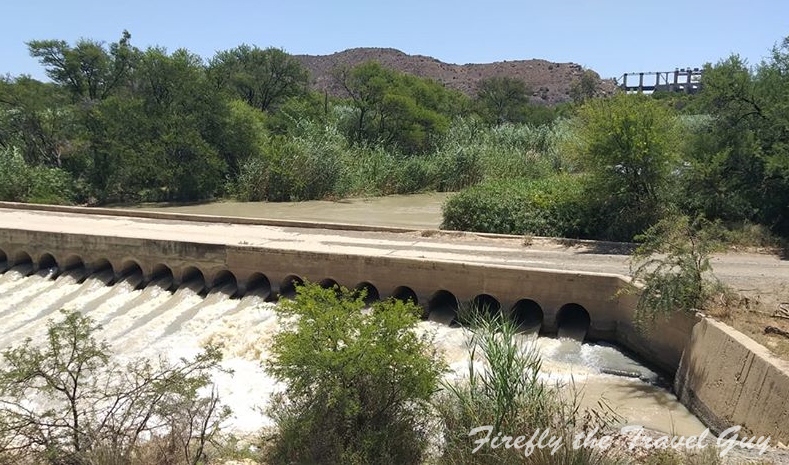
A few months ago we spent a weekend on a friend’s farm near Darlington Dam and he took us for a quick drive to see what the dam looked like. Unfortunately we didn’t get to go to the dam wall itself, so my picture is of the runoff below the wall.
Darlington Dam, also referred to as Lake Mentz is located off the main road between Kirkwood and Jansenville and was completed in 1922. The primary reason for the dam being built was to provide an adequate supply of water to especially citrus farmers further down in the Sundays River Valley with irrigation water for their trees.
The story of the land on which the dam is located goes back to 1905 when P.W.F. Weyers settled on Darlington in the fertile Sundays River Valley and planted fruit orchards and vineyards. Later a hotel, post office, shop, smithy, house and several outbuildings were established on the farm, but these all disappeared under waters of Lake Mentz when it was established in 1922.
The original dam was designed to store 142 million m3, but the high sediment yield of the Sundays River meant that sediment delivery into the reservoir basin quickly reduced its capacity. The dam wall was raised by 1.5 m in 1935 and again by 5.8 m in 1951. By 1979 the reservoir had lost a total of 41.47% of its design capacity.
The serious drought of 1966 and 1967 emphasized the necessity to commence work on the Skoenmakers Canal to link the Great Fish River to Darlington Dam in view of an expected increase in irrigation below Darlington Dam and the demand for water in the Port Elizabeth metropolitan area.
In the 1990s the ‘lake’ was renamed the Darlington Dam and today it has been incorporated into the Addo Elephant National Park.



